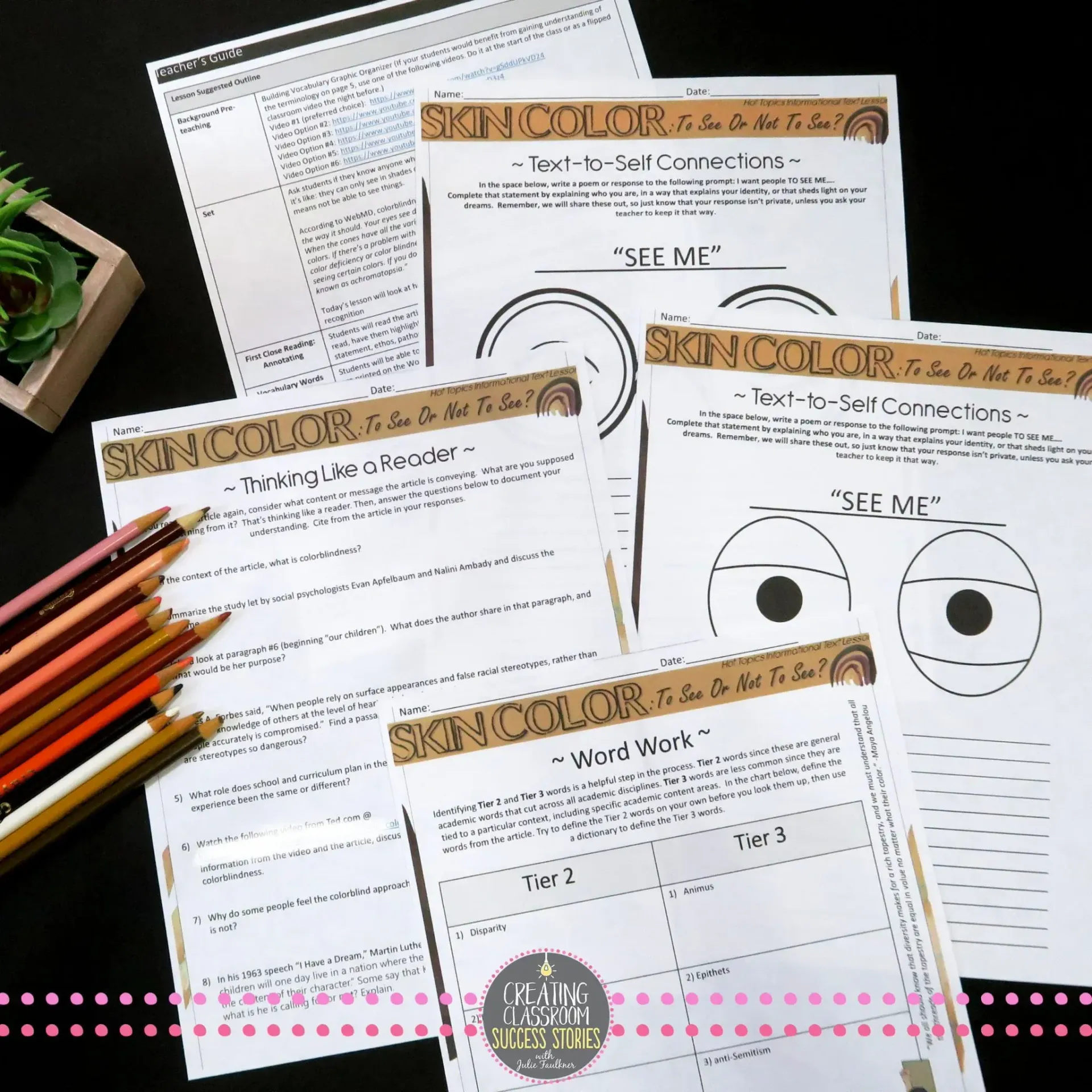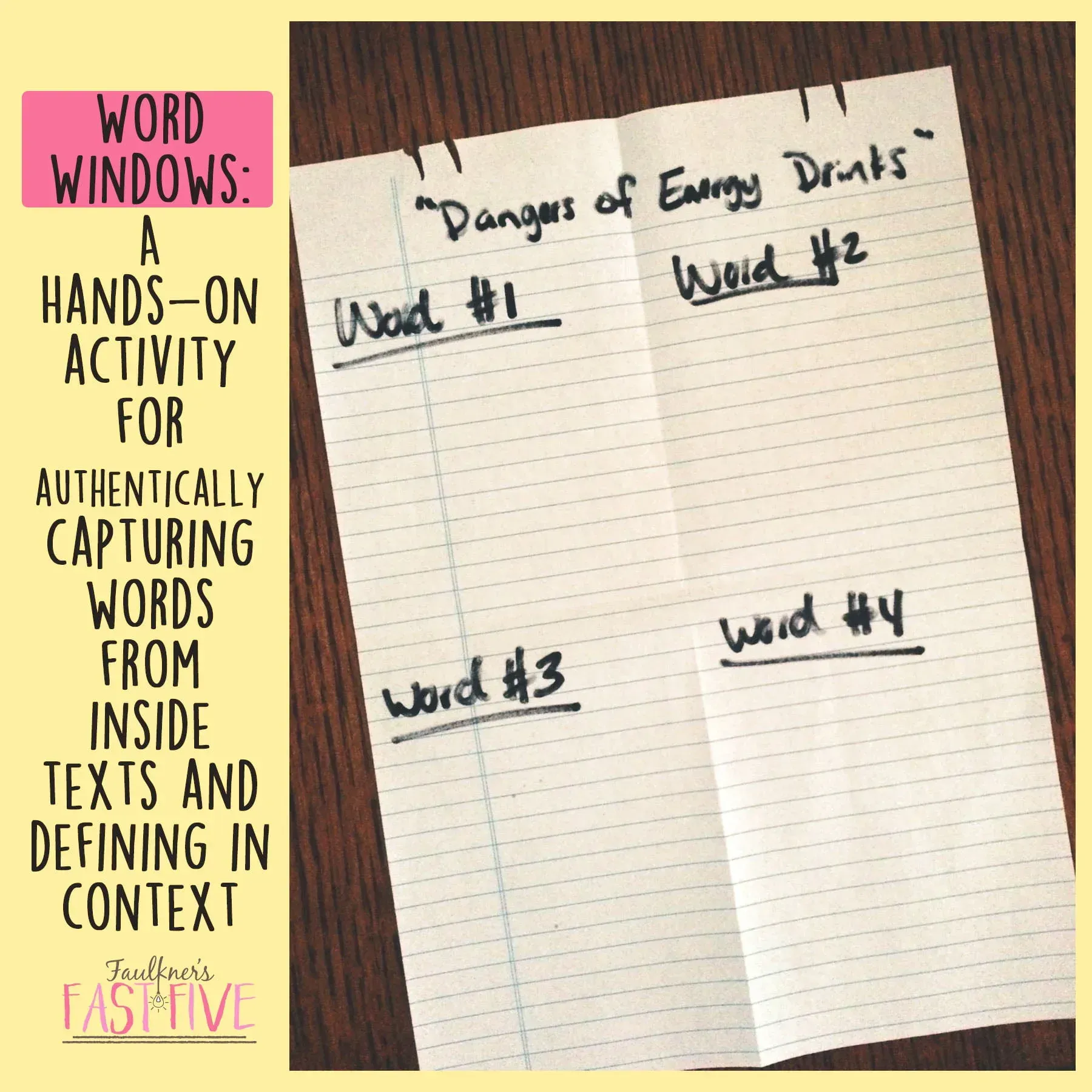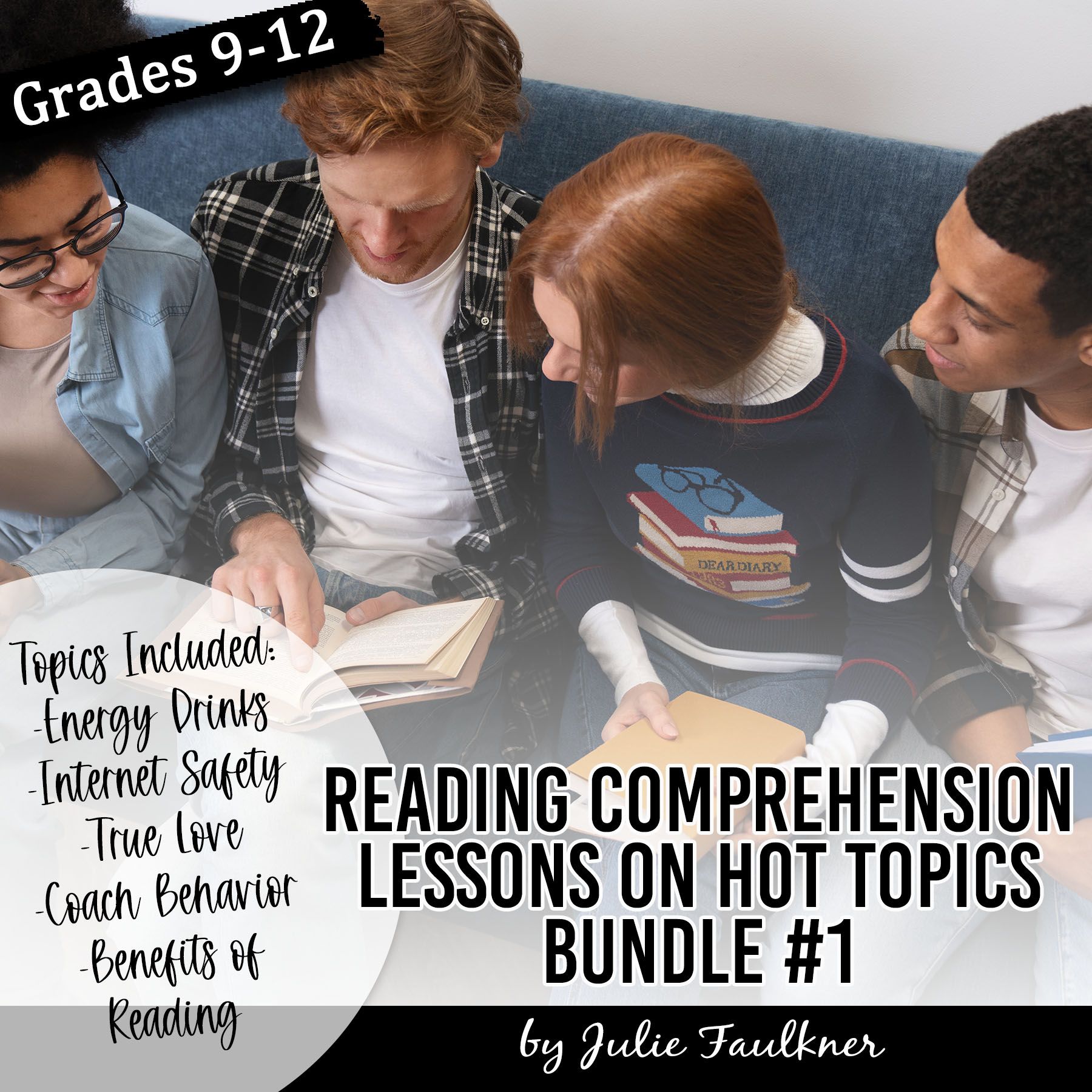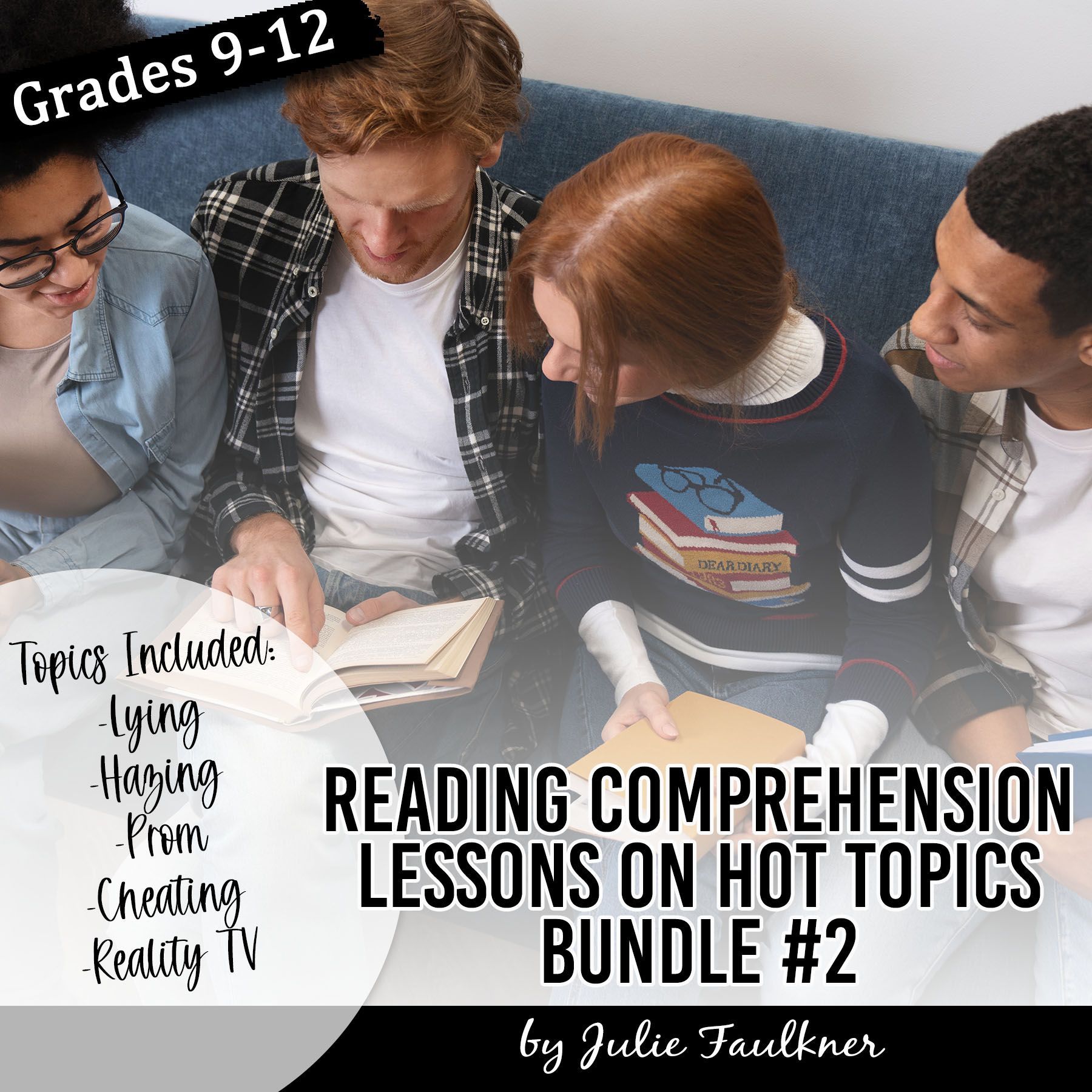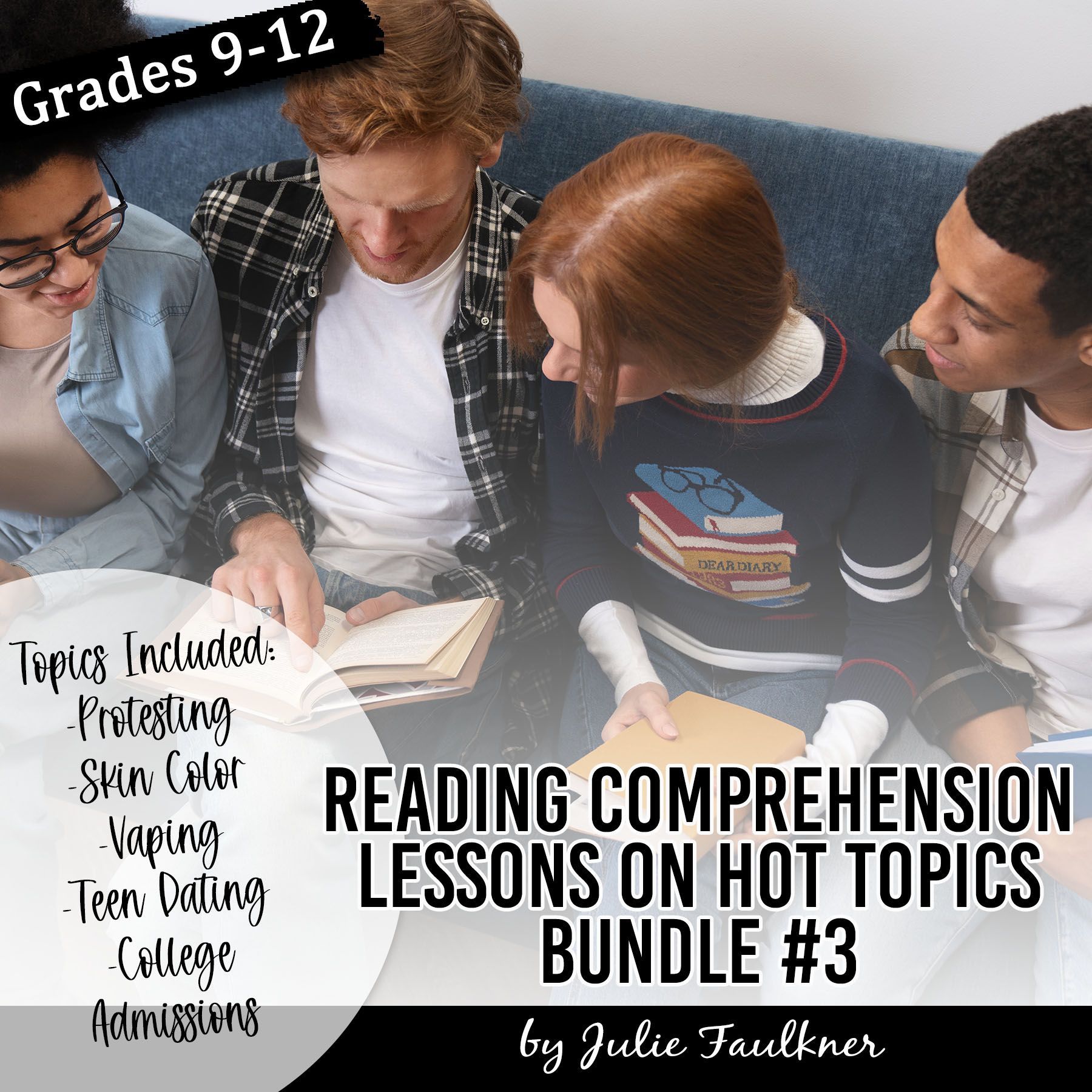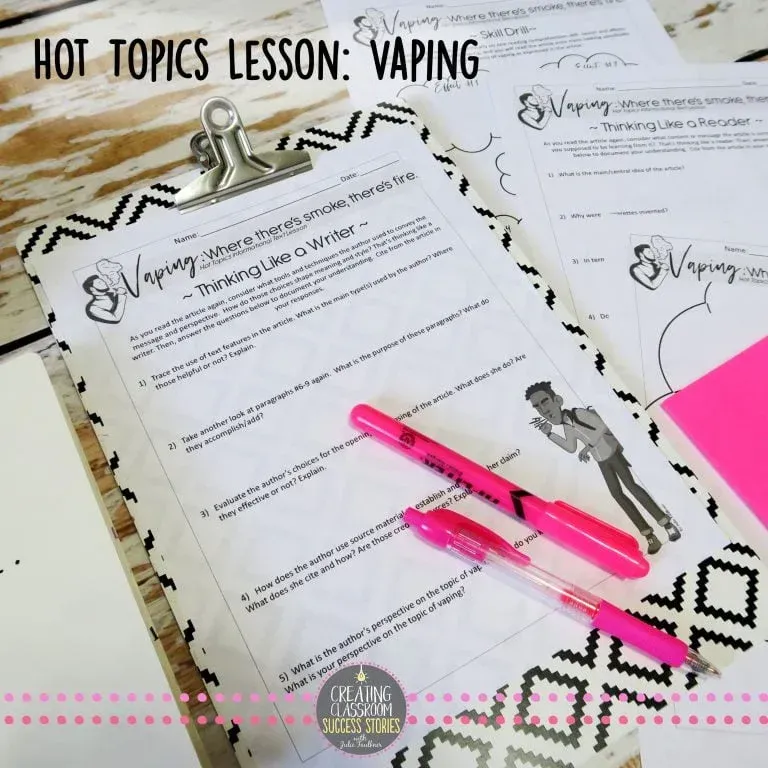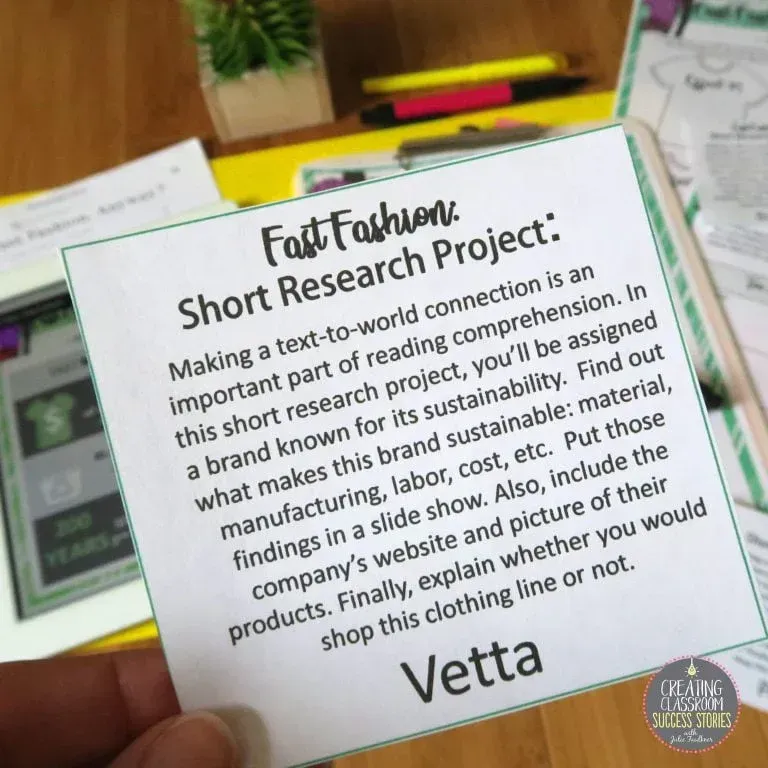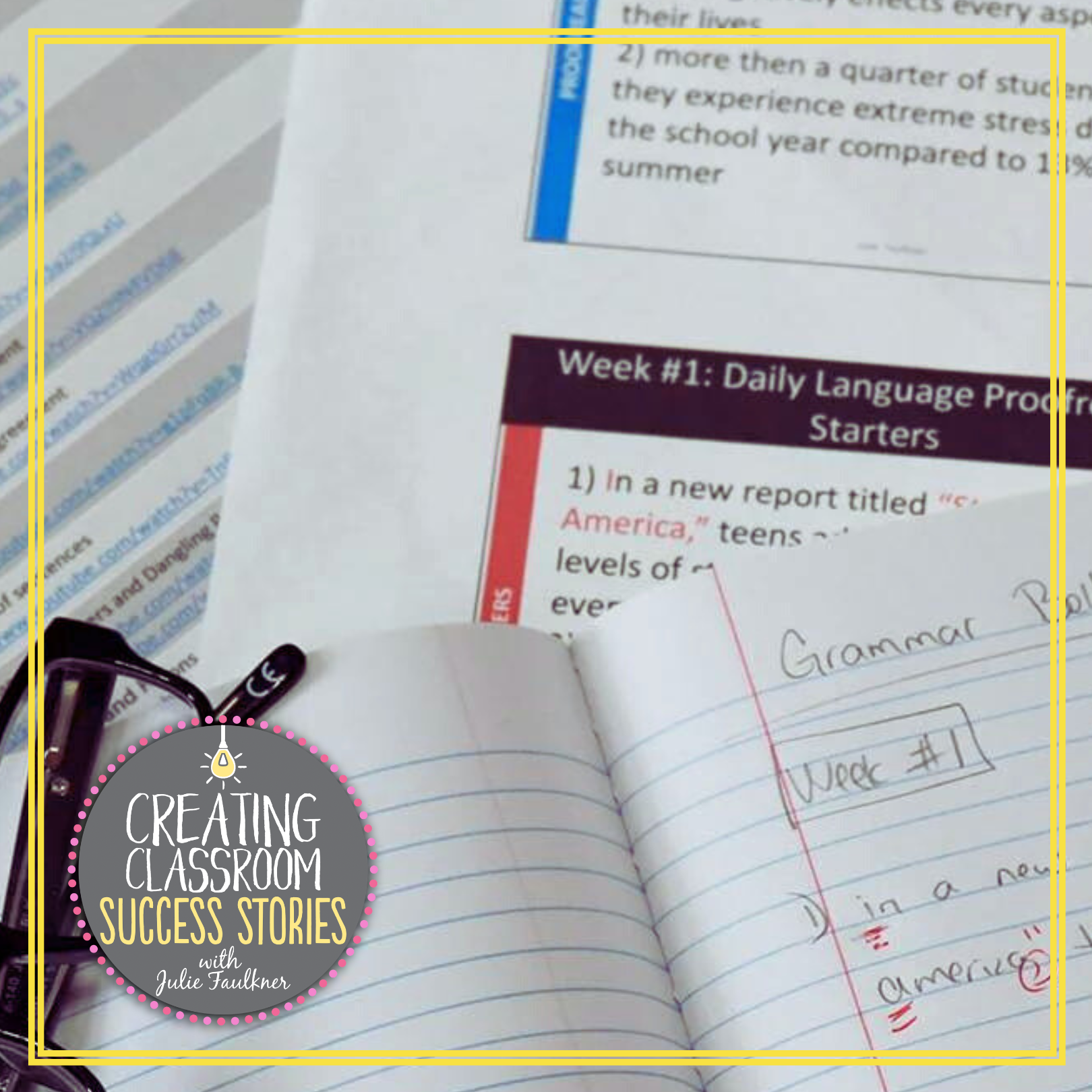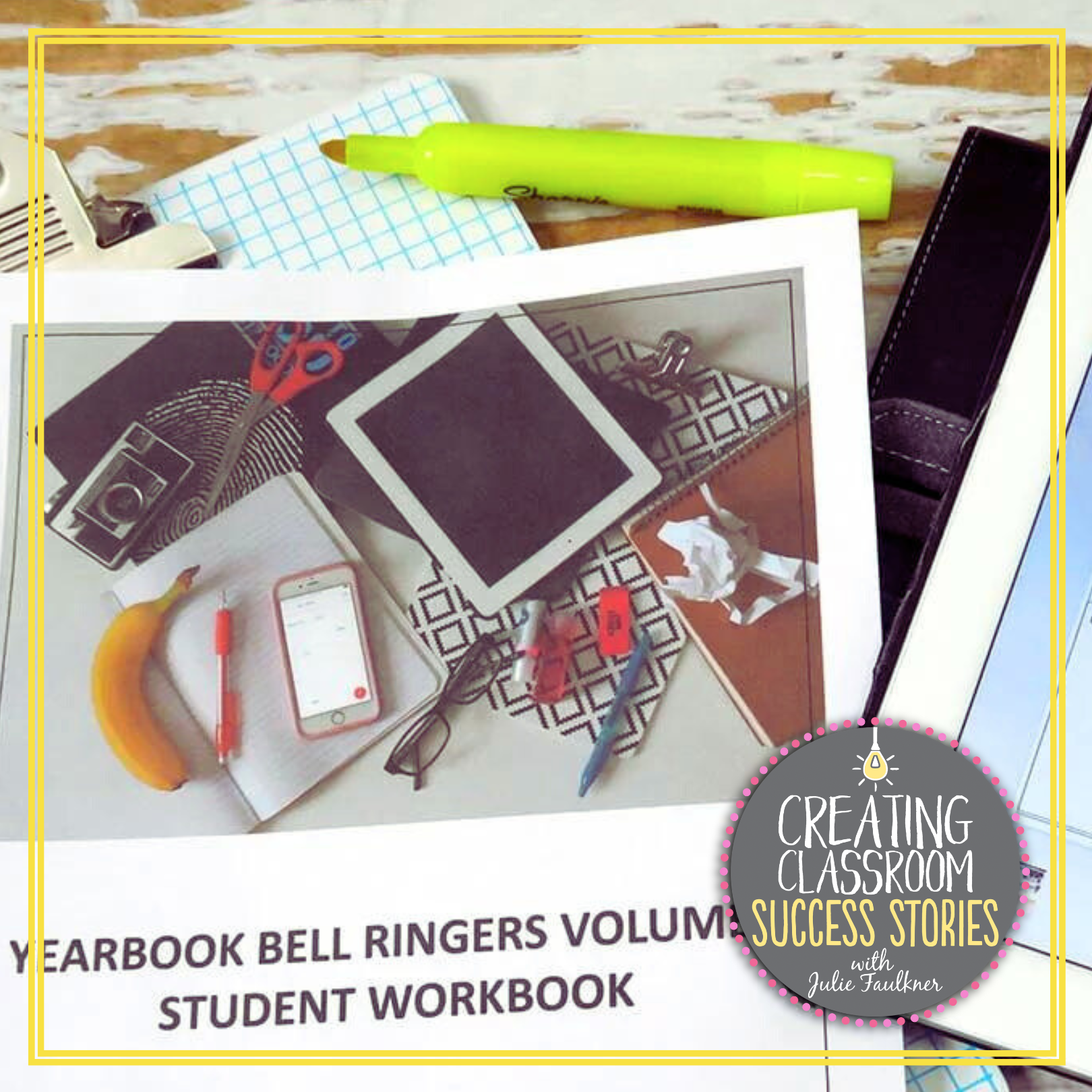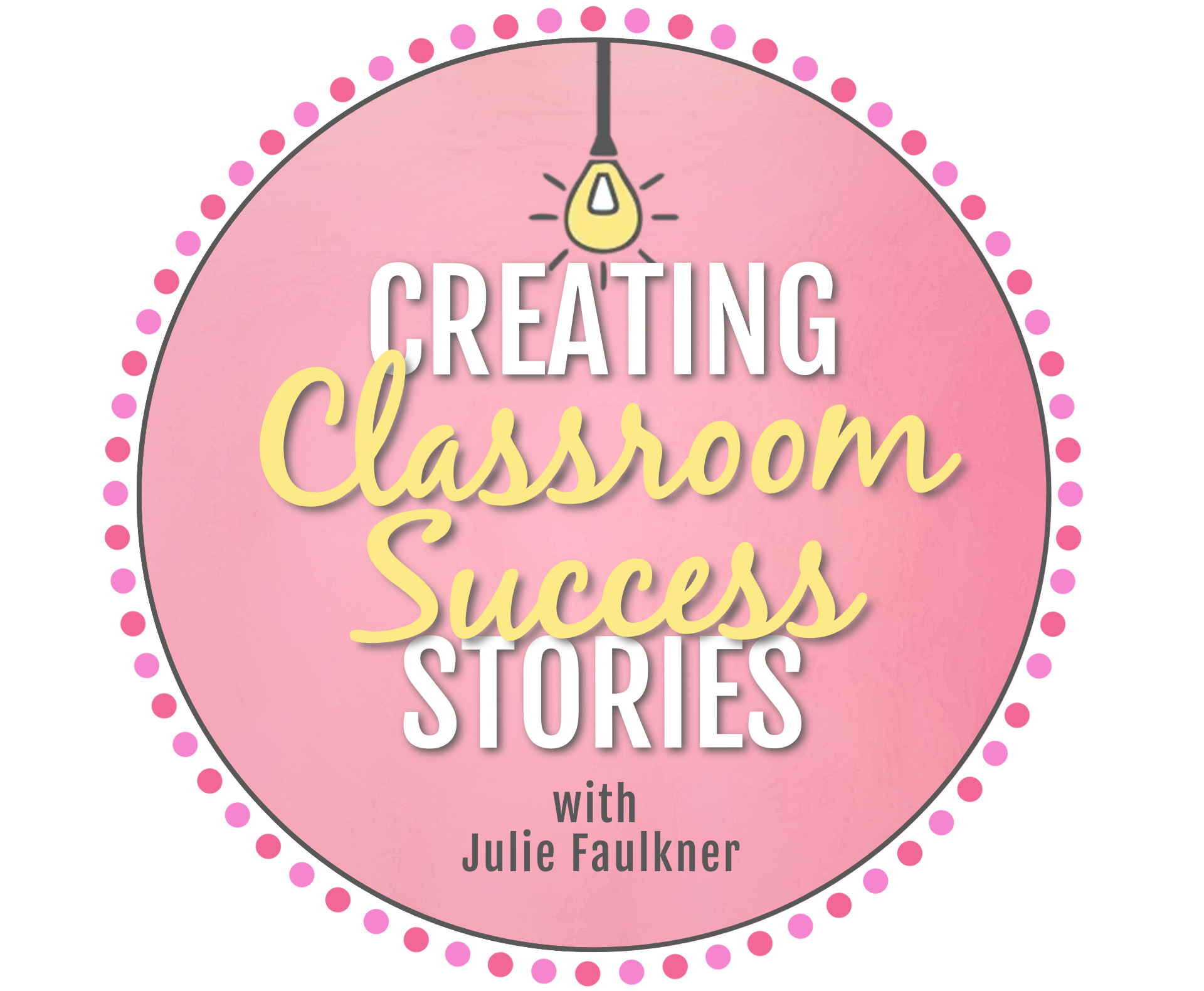Benefits of Nonfiction
Reading Comprehension Lessons on Hot Topics in High School English Classes
According to a Gallup analysis of U.S. Department of Education data, “About 130 million adults in the U.S. have low literacy skills. This means more than half of Americans between the ages of 16 and 74 (54%) read below the equivalent of a sixth-grade level.” Whether you teach English or not, if you work with students, you’ve seen the urgent need for stronger reading skills.
As an English teacher, I make sure my students read a wide variety of texts, and over the years, I’ve noticed something: many of them actually prefer nonfiction and informational texts over fiction. That insight inspired me to create informational text lessons around hot topics—current events and issues that spark interest, curiosity, and sometimes even a little debate. These lessons not only get students reading, but also thinking critically, engaging with real-world issues, and practicing essential literacy skills. In this post, I’m sharing the many benefits of using hot topics, nonfiction reading comprehension lessons in your classroom—for both students and teachers.
BENEFIT #1: VOCABULARY WORD ACQUISITION
A while back, my mom was reading a book with my (at that time) 7-year-old niece, and my niece came across an unfamiliar word. She stopped to ask my mom what it meant. (I absolutely love that she does that!) My mom turned to her phone to have her “Google it," but her phone’s battery was dead (Thankfully :). No worries, though, because my mom had a dictionary at her house. When she showed it to my niece, my niece said, “What’s this?” My mom, a veteran high school English teacher-turned principal, was shocked. She explained what a dictionary is. They looked up the word, and my niece thought getting to do that was so “cool.”
There are so many takeaways from this story. First, if my niece hadn’t been reading in the first place, she wouldn’t have encountered a new word. Secondly, she stopped to ask what it meant. Students need to be aware of new words, and they need to stop and look at new words and their meanings that pop up inside of texts they read. Nonfiction articles are excellent for this because they are short, and often the words that show up in these types of texts are words students might see again and again. Lastly, there is the scary thought of how dependent we are on technology. At the time, my niece was 7, and she hadn’t seen or heard of a dictionary. That may be because she was too young, but could it be because technology is slowly phasing it out? It’s not a bad thing to search the Internet for a word or concept; we want students to use their resources. But thinking of a world with no books makes me shudder. Either way, words live inside texts and should be explored authentically and organically. Tons of research show that when students acquire words authentically rather than from lists, there is a greater likelihood of them being able to remember the word and use it later since they saw it and learned it in context.
One hands-on activity I do is a “Word Window” foldable for recording words during reading. Just take a sheet of notebook paper and fold it so there are 4 squares – no cutting or pasting needed. The students read the article and find four words they don’t know. I don’t give them the words. They write one word in each square and then look up the definitions in the dictionary. I encourage them to translate the definition into their own words and then go back to the article to see if what they wrote makes sense. Now they have a clearer understanding of the word, as if they have looked through a window, symbolically speaking. All of my Hot Topics Info Text Lessons come with “Word Work,” a sheet with pre-selected words from the article.
BENEFIT #2: INFORMING STUDENTS AND GETTING THEIR ATTENTION WITH RELEVANT MATERIAL
In Part 1 of Bradbury’s Fahrenheit 451, a timeless commentary on society and anti-intellectualism, Captain Beatty rants, “Cram them full of noncombustible data, chock them so […] full of ‘facts’ they feel stuffed, but absolutely ‘brilliant’ with information. Then they’ll feel they’re thinking, they’ll get a sense of motion without moving.” This is where the majority of our students are today. With non-stop videos from TikTok and an abundance of armchair experts posting on YouTube daily, “information” is everywhere. I often wonder, though, how censored — and correct — is that info? It doesn’t seem that way, but it also doesn’t seem varied (unbiased) or rigorous to digest. It is imperative that we present students with unbiased, varied literature that allows (teaches) them to gather and truly dissect and digest information. The hot topics approach grabs their attention with topics they care about, but the texts I choose (in my no prep, hot topics lessons) are also relevant to their lives — topics about which they need to be adequately and correctly informed.
Teach AP Language and Composition? These lessons offer a variety of benefits:
- Ideal for building essential skills for Question 3 (Open Argument).
- Meaningful practice with multiple-choice comprehension and synthesis passages.
- Several lessons include “Thinking Like a Writer” questions that develop students’ understanding of rhetorical style and analysis
BENEFIT #3: SPARKING CRITICAL THINKING & INVITING STUDENT VOICE
The faculty at the University of Tennessee at Chattanooga defines critical thinking as “a set of information and beliefs, generating and processing skills, and the habit of using those skills to guide behavior.” When students are reading, I want them to demonstrate those behaviors. How do we get students to do that? One way is to have them engage with a text multiple times, and I like to do that by having them read once while thinking like a reader, and then again, by having them think like a writer. This allows students to see the text from multiple angles – angles with which they would be required to engage at some point or another. It's also the perfect exercise for AP Language students studying rhetorical analysis.
Beyond the sets of premade questions, students can explore deeper layers by asking their own questions. These aren’t just any questions; they are questions that go beyond the surface – beyond the black and white – questions that raise more questions.
A couple of question stems that might get students started might be:
- Why did the author say…
- I wonder how it might be different if…
- How is this idea different than…
- How is this idea the same as…
- What is the underlying issue of…
- What could be another solution…
- Could there be other causes or effects…
- How did the author know…
The articles I chose are all hot topics. Sometimes, both sides are presented, but other times, they lean one way. In either case, I have students prepare to take a side in writing. When there’s time, I host a debate. This is also an excellent time to review and prepare claims, counterclaims, and rebuttals. (See how I teach that in this free video.) Debating is an excellent way to practice speaking, listening, and citing evidence. Read more about Hosting Successful Class Discussions at this post. The important part to remember is that these debates will be textually informed and welcoming to both sides.
You also grab pre-made task cards with question stems that work with any text you find!
BENEFIT #4: BENEFITING A WIDE RANGE OF AUDIENCES AND PURPOSES
One of the biggest advantages of using hot topics reading comprehension lessons is how flexible they are. These lessons aren’t just for one setting—they serve a wide range of purposes and audiences. Teachers can use them for RTI and intervention, where students need scaffolded practice with core literacy skills, or as sub plans that are ready-to-go and still meaningful. They also work well as a weekly article study routine, homework assignments, or even quick bell ringers that spark discussion. Because the texts and prompts encourage analysis and critical thinking, they’re also an excellent fit for test prep and AP Lang practice, where students must evaluate arguments, rhetorical strategies, and real-world issues. Whether used in small groups, independent practice, or whole-class discussions, these lessons adapt easily and meet students where they are.
BENEFIT #5: COVERING NUMEROUS STANDARDS
- Summarizing – Identifying the central idea and its development throughout is a critical step of fully understanding a text. I teach students to use the Somebody – Wanted– But – So – Then method of summarizing. Once students have this strategy down, they can begin to see how it functions on a fundamental level to arrive at a central idea.
- Writing Prompts – I always look for ways for students to write about what they read. All of my Hot Topics Lessons include at least one prompt, if not multiple in various modes.
- Research – Many nonfiction texts or informational text articles you might find lend themselves really well for further investigation. If you don’t have time to conduct research in class, consider using the research tasks included with my Hot Topics Lessons with your advanced learners for differentiation.
Conclusion
At the end of the day, the literacy crisis we’re facing won’t be solved with quick fixes, but every intentional choice we make as teachers can move the needle. By bringing hot topics and high-interest nonfiction reading comprehension passages into our middle and high school English classrooms, we not only build the critical comprehension skills our students desperately need but also show them that reading is relevant, engaging, and worth their time. Whether you use these lessons for intervention, enrichment, or simply to spark conversation, they give students the tools to think deeply about the world around them—and that’s the kind of reading that lasts.
BEYOND THE BLOG:
See how these lessons continue to be relevant with links to breaking news at this Instagram Highlight.
See and hear me explain these points over on Instagram.
Love this content?
Sign up for my email newsletter with more tips, ideas, success stories, and freebies!






